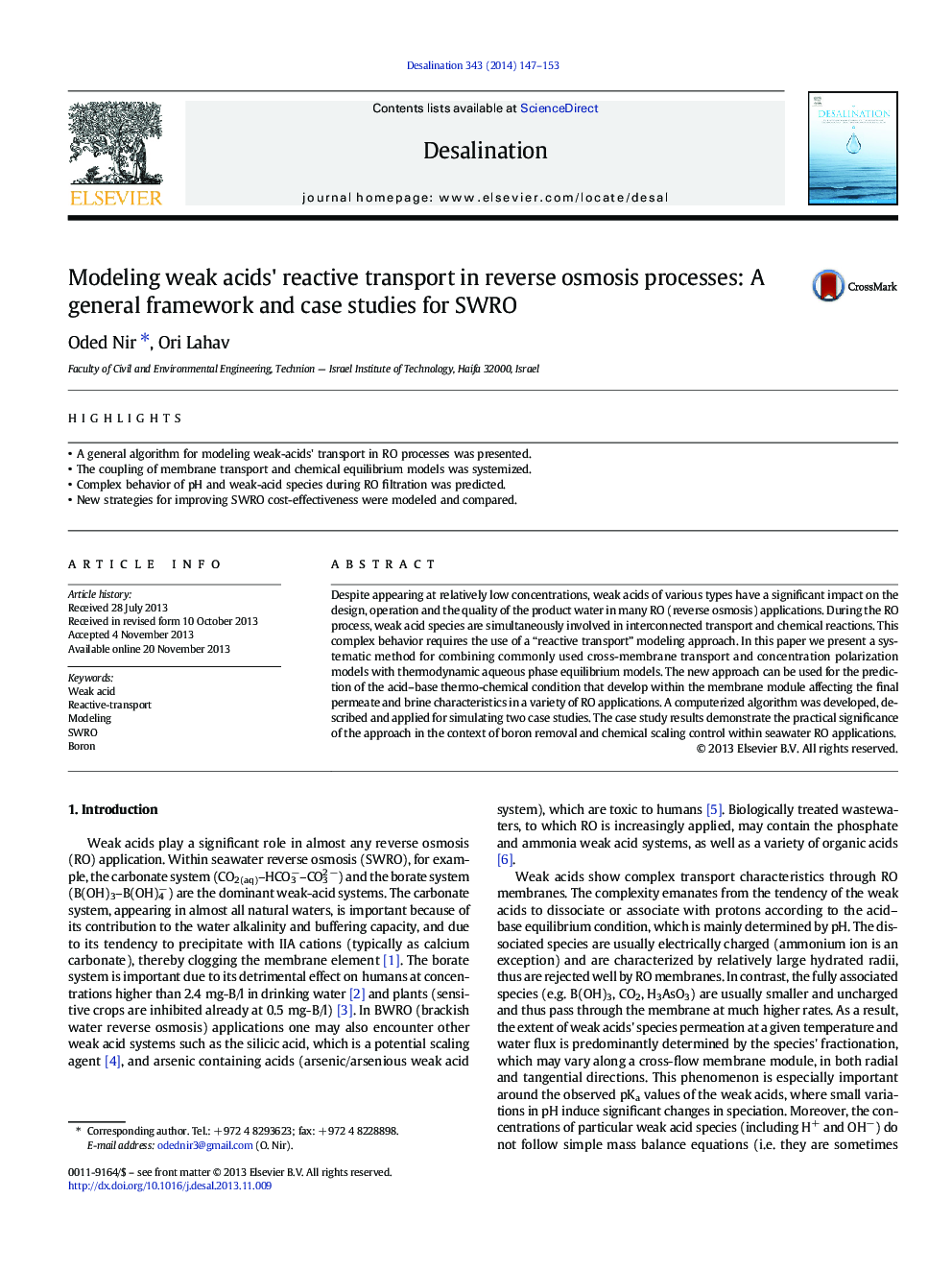| Article ID | Journal | Published Year | Pages | File Type |
|---|---|---|---|---|
| 623556 | Desalination | 2014 | 7 Pages |
•A general algorithm for modeling weak-acids' transport in RO processes was presented.•The coupling of membrane transport and chemical equilibrium models was systemized.•Complex behavior of pH and weak-acid species during RO filtration was predicted.•New strategies for improving SWRO cost-effectiveness were modeled and compared.
Despite appearing at relatively low concentrations, weak acids of various types have a significant impact on the design, operation and the quality of the product water in many RO (reverse osmosis) applications. During the RO process, weak acid species are simultaneously involved in interconnected transport and chemical reactions. This complex behavior requires the use of a “reactive transport” modeling approach. In this paper we present a systematic method for combining commonly used cross-membrane transport and concentration polarization models with thermodynamic aqueous phase equilibrium models. The new approach can be used for the prediction of the acid–base thermo-chemical condition that develop within the membrane module affecting the final permeate and brine characteristics in a variety of RO applications. A computerized algorithm was developed, described and applied for simulating two case studies. The case study results demonstrate the practical significance of the approach in the context of boron removal and chemical scaling control within seawater RO applications.
